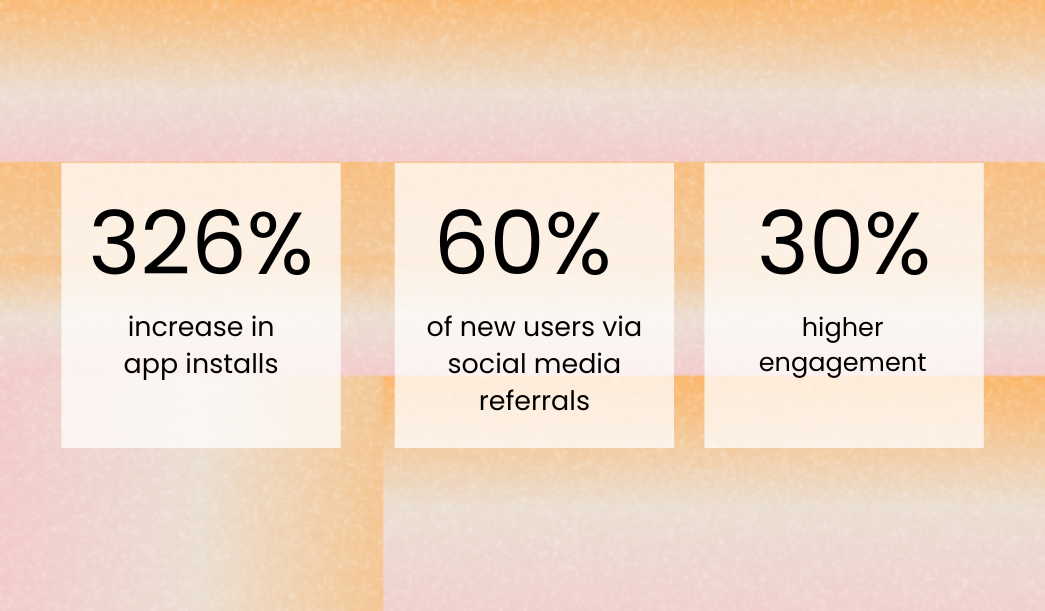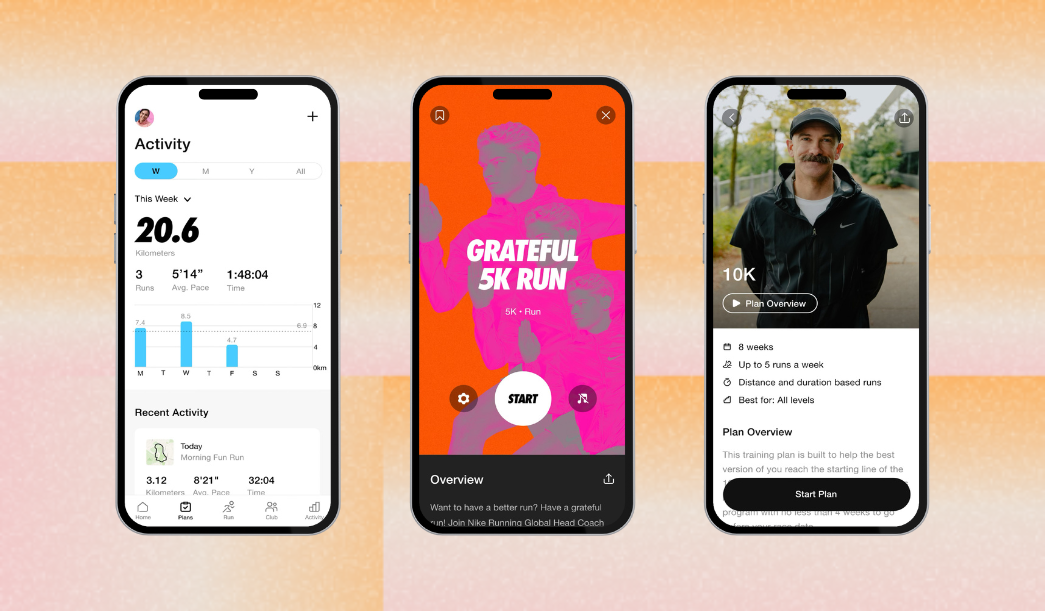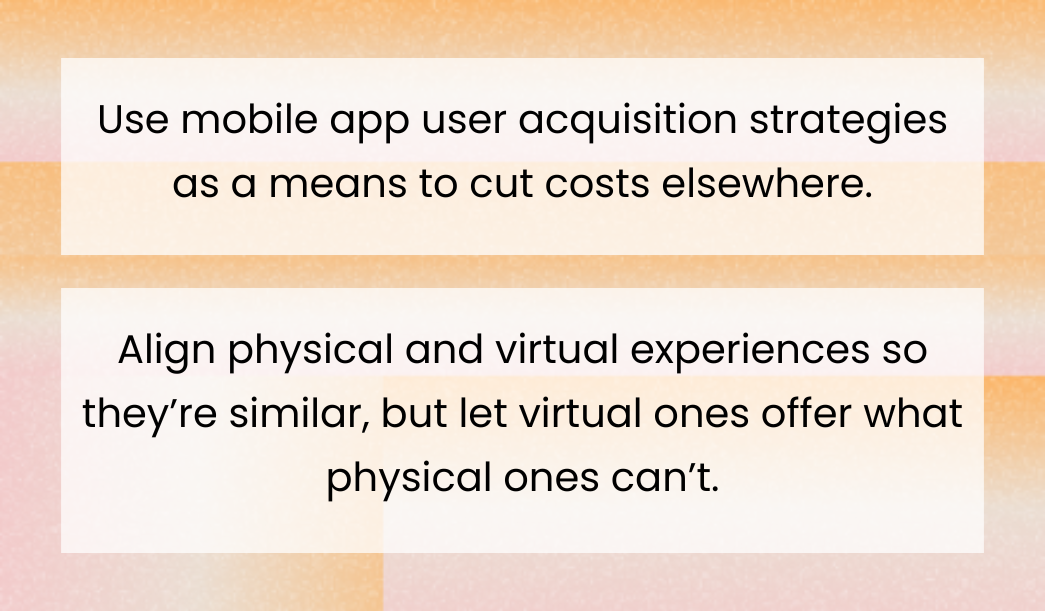Mobile trends
October 22, 2025
4 Health & Fitness Apps & User Acquisition Challenges They Beat
Health and fitness apps already have notoriously high churn rates, making it difficult to find users with high LTVs. And the onslaught of AI-driven ad platforms and ASO algorithm changes aren’t helping either. The result is costly and inefficient user acquisition, manifesting as rising costs/competition, budget inefficiency/allocation, attribution and measurement challenges, and difficulty scaling while maintaining ROI.
FitConnect—User App Acquisition Strategies to Beat Rising Costs and Competition
FitConnect, a fitness tracking app launched in 2022, overcame rising costs and competition by creating affordable, channel-appropriate content, establishing strategic partnerships, and preparing for algorithmic changes. This approach enabled them to slash their CPI and more than triple their installs.
The Problem
Initially, FitConnect struggled with a “trifecta” of common fitness app issues:
- Low download numbers.
- High drop-off rates.
- Steep user acquisition costs.
Additionally, the app’s social features weren’t gaining traction, and they were going head-to-head with apps that were coasting off a surge in post-pandemic usage and popularity.
The Solution
With their audience being fitness enthusiasts aged 25-40, they incorporated social media use into their mobile app user acquisition strategy. FitConnect strategically posted content on social channels that met their audience where they were, leveraged the strengths of those platforms, and anticipated algorithmic changes. That included:
- Snapshots, progress updates, and motivational posts on Instagram.
- Entertaining fitness tips on TikTok to reach their younger user base.
- Community and group-building on Facebook to connect with their older audience members.
- User-generated content (UGC) such as posts highlighting user progress and exercises tutorials, integrated with the app’s features.
Much of their content was repurposed and redistributed across their channels to cut costs, and they forged partnerships with micro and mid-tier influencers.
FitConnect also refined its audience targeting as part of its revamped user acquisition strategy. They created detailed user personas such as:
- “Motivated Michelle” (busy professional looking to stay fit).
- “Social Sam” (younger users who love community challenges).
They retargeted users by analyzing user interactions, and then created dynamic ads targeting specific engagement points, relying on A/B testing to optimize both visuals and messaging. FitConnect also began tracking meaningful metrics such as app downloads, user retention, cost per acquisition.

The Result
- 326% increase in app installs
- $0.20 cost per install
- 60% of new users via social media referrals
- 30% higher engagement and 60% better conversion rates via mid-tier influencer partnerships.
Needless to say, their efforts were a success.
Key Takeaways
- Select-channel appropriate organic content that resonates with and lives where your audience frequents.
- Increase app engagement by getting your community to use or create content that naturally uses your app’s features.
- Prepare for and plan around social media (or app store) algorithm changes.
Nike Training Club—User App Acquisition Strategies to Increase Budget Efficiency and Allocation

Nike’s Training Club app demonstrated how to optimize budget efficiency and allocation by doubling down on personalization, gamification and offering premium content for free. The sports giant shifted their budget focus from paid installs to creating richer in-app content.
The Problem
Before 2020, users had to pay for guided workout programs. When the COVID-19 pandemic hit, Nike did the “unthinkable” by making premium workout content temporarily free to serve users as they were stuck at home.
The Solution
Essentially, Nike prioritized retention to improve their user acquisition strategy. By granting users full access to their app, they hoped to boost engagement, which would in turn reduce their average user acquisition costs.
Of course, Nike already created the right pre-pandemic infrastructure and tapped into the virtual fitness trend early. The app was offering personalized and athlete-led content, as well as seamless integration with wearables from Fitbit, Apple Watch, and more.

The Result
- 25 million+ new downloads in a single quarter
- 60% increase in active users
- $170 million in incremental revenue (as well as apparel, accessory and shoe sales).
Key Takeaways
- Invest spend in retention and engagement strategies first to reduce user acquisition costs.
- Provide expertise and build trust first (i.e. offering free, expert-driven premium content where appropriate) to generate sales later.
- Spot trends in consumers behaviours and build features or content that align with them before they become mainstream.
MyFitnessPal—User App Acquisition Strategies for Better Attribution and Measurement

MyFitnessPal optimized their attribution and measurement efforts by using Branch, a one-stop-shop platform for media channel tracking and to gain subscribers.
The Problem
The company found it challenging to find a reliable source of data to inform their retention and user acquisition strategies. Additionally, the rapidly changing digital landscape and limited access to consumer data compounded the problem.
The Solution
MyFitnessPal enlisted the support of a mobile marketing platform to help them measure their marketing effectiveness. They gained access to a comprehensive tool suite, enabling them to gain powerful insights into their campaign performance and other KPIs such as customer acquisition costs (CAC) and conversion rates. They also gained access to an aggregated view of attribution data across all owned, earned, and paid channels, allowing them to make channel and campaign-level decisions.
The Result
- 4% reduction in customer acquisition costs (CAC) YoY
- 20% scaling spend simultaneously
The switch to a robust, user acquisition tracking platform has given MyFitnessPal much more foresight into their marketing performance. More importantly, it gave them more control in terms of how to respond to the patterns they identified.
Key Takeaways
- Choose a data platform that gives you a comprehensive view of owned, earned, and paid channels.
- Focus on user acquisition data that matters (i.e., CAC)
- Rely on user acquisition metrics to inform your decisions
Working with a user acquisition agency can give you the tools required to visualize such data under one hub. Here at Z2A Digital, we offer a UA-focused, proprietary platform and media buying team to help improve paid user acquisition ROI. We execute cross-channel strategies, serving as an extension of your user acquisition team, helping you optimize ad performance for existing channels and scaling others. Additionally, we can assist you with measurement and attribution, while creating media plans to support your KPI objectives without cannibalizing your traffic.
Nordic Wellness—User App Acquisition Strategies for Scaling While Maintaining ROI
Swedish gym chain, Nordic Wellness, overcame scaling and ROI challenges by building a virtual platform to expand their fitness services.
The Problem
Nordic Wellness originally operated as a predominantly physical chain, but its members began to seek more flexible workout options such as 24/7 and online options. Also, the company needed to optimize staffing costs associated with in-person classes.
The Solution
Realizing this two-pronged problem, Nordic Wellness set up a virtual platform that allowed them to extend their fitness services beyond the gym floor. They created an on-demand content system, providing members access to high-quality, pre-recorded classes anytime, anywhere in Sweden.
So if users' schedules wouldn’t permit, they could still “attend” their fitness classes. The move paid off in dividends, as it enabled Nordic Wellness to enhance member retention, optimize their space, and attract new members.
The Result
- 1.4+ million virtual experiences delivered
- 51 million minutes of virtual fitness content streamed across Nordic Wellness clubs (equivalent to 847,042 hours)
- 5,000 available virtual classes per year, reducing staffing costs up to $250,000 annually

Key Takeaways
- Use mobile app user acquisition strategies as a means to cut costs elsewhere.
- Align physical and virtual experiences so they’re similar, but let virtual ones offer what physical ones can’t.
There’s Still Hope for Mobile App User Acquisition in 2025 and Beyond
Yes, app user acquisition in 2025 can feel like a grind. But the four brands above prove that even under challenging scenarios, the right adjustments and pivots can translate to user acquisition success. That rings true whether it means tweaking your in-app offerings, focusing on more actionable data, or building a new platform together.
At Z2A Digital, we offer solutions to help you achieve mobile app user acquisition that cuts through market or consumer behaviour changes. That includes the implementation of user acquisition strategies similar to the brands mentioned above. With tools such as AdEye technology, we can help improve your ad performance and optimize your messaging for supply channels such as programmatic DSPs to search media and more.
Are you struggling to make good on your ROI with your app user acquisition strategies? Book a consultation with Z2A Digital to find your breakthrough solutions today!
Frequently Asked Questions
How can customer acquisition cost be reduced?
You can reduce your customer acquisition cost (CAC) by focusing on improving retention, targeting the right audiences with channel-appropriate content, A/B testing paid ads, and enhancing SEO and UX. Other strategies include offering customer incentives and leveraging influencers on social media.
What is a good multi-channel UA strategy?
A robust multi-channel UA strategy combines social and programmatic ad campaigns through precise advanced tracking, consistent messaging, and personalized segmentation across various platforms. This approach ensures your brand maintains visibility to your users across all channels, ensuring a cohesive and impactful user journey that maximizes ROI.
How to convince customers to download an app?
You can encourage downloads by employing methods such as providing video tutorials to explain its features and benefits, or using paid or organic content on social media to drive traffic to the app download page. Don’t be afraid to offer incentives where appropriate.
Ready to think differently about user acquisition?
Subscribe to our newsletter and stay updated with the latest UA strategies and mobile marketing trends.





.png)
.webp)

.png)
